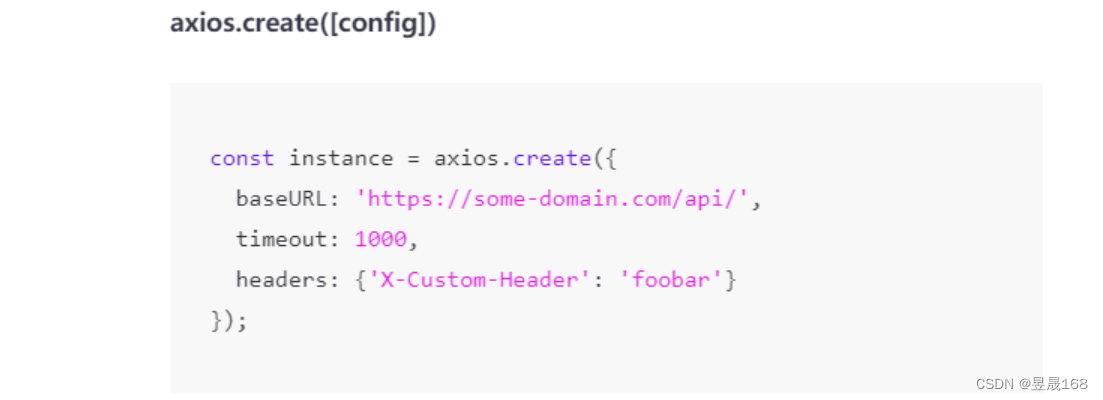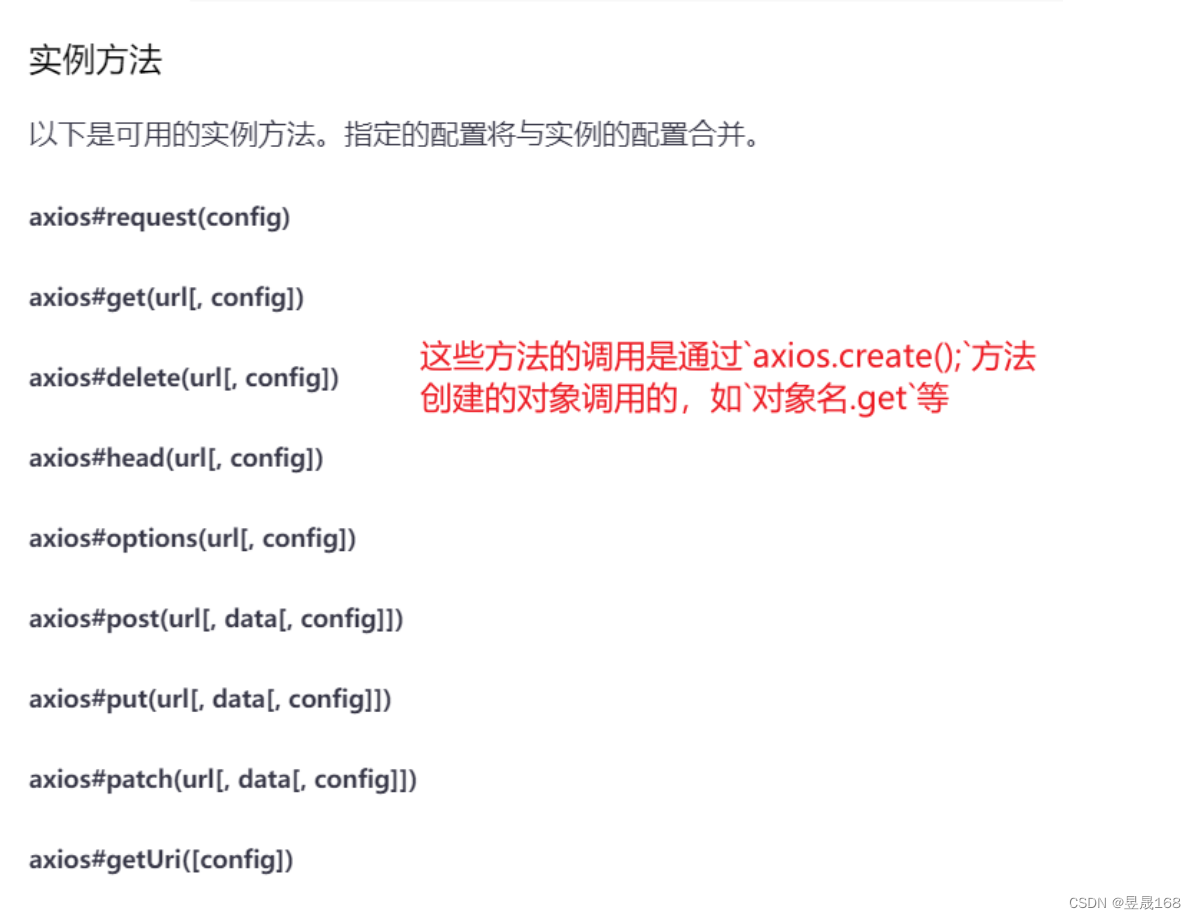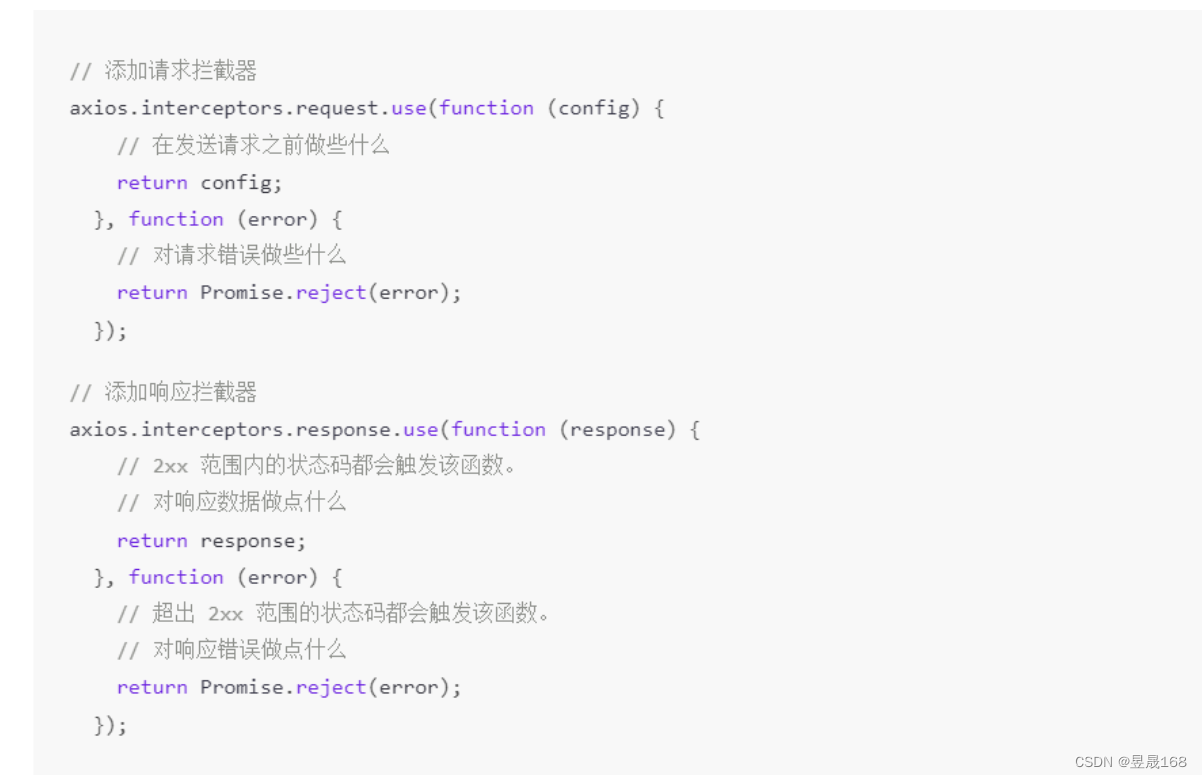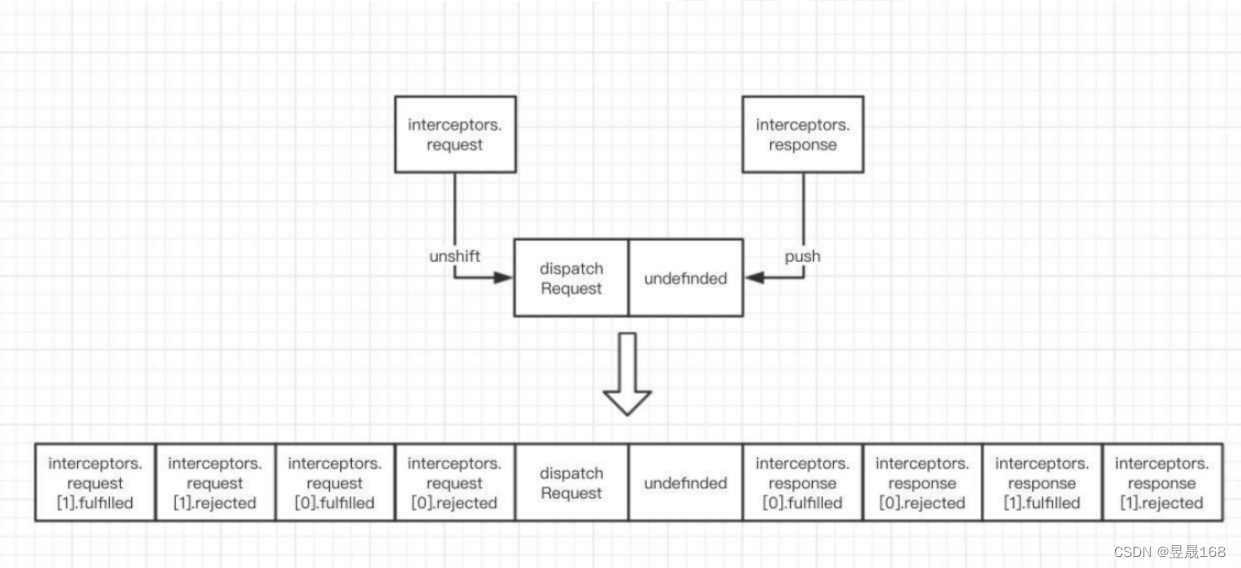SpringBoot+axios结合发送ajax
1.搭建环境
1.1 创建表并添加数据
DROP TABLE t_posts;
CREATE TABLE IF NOT EXISTS t_posts(
pid INT PRIMARY KEY AUTO_INCREMENT,
author VARCHAR(20) NOT NULL DEFAULT '海康',
title VARCHAR(50) NOT NULL DEFAULT '中国人民'
)ENGINE=INNODB DEFAULT CHARSET=utf8;
1.2 创建SpringBOot项目
![[外链图片转存失败,源站可能有防盗链机制,建议将图片保存下来直接上传(img-8ftnt2pP-1663596153363)(D:\typora笔记\axios\img\1663576096597.png)]](https://img-blog.csdnimg.cn/261e525a890b4d6390a9fa89853422cb.png)
1.3 相关数据库配置:
#修改端口号
server:
port: 80
spring:
#配置数据源信息
datasource:
#配置数据源类型
type: com.zaxxer.hikari.HikariDataSource
driver-class-name: com.mysql.jdbc.Driver
url: jdbc:mysql://localhost:3306/crud?characterEncoding=utf-8&useSSL=false
username: root
password: root
POJO类
package com.haikang.axios.pojo;
import lombok.AllArgsConstructor;
import lombok.Data;
import lombok.NoArgsConstructor;
import lombok.ToString;
import java.io.Serializable;
/**
* @Author 海康
* @Version 1.0
*/
@Data
@AllArgsConstructor
@NoArgsConstructor
@ToString
public class Post implements Serializable {
private Integer pid;
private String author;
private String title;
}
统一数据响应类
package com.haikang.axios.pojo;
import lombok.Data;
import java.io.Serializable;
/**
* @Author 海康
* @Version 1.0
* Json格式的数据进行响应
*/
@Data
public class JsonResult<E> implements Serializable {
private Integer state;//状态码
private String message;//描述信息
private E date;// 数据
public JsonResult() {
}
public JsonResult(Integer state) {
this.state = state;
}
public JsonResult(Throwable e) {
this.message = e.getMessage();//获取错误信息
}
public JsonResult(Integer state, E date) {
this.state = state;
this.date = date;
}
public JsonResult(Integer state, String message, E date) {
this.state = state;
this.message = message;
this.date = date;
}
}
1.4 测试
创建index.html页面,并且需要引入axios文件
<script src="https://cdn.bootcdn.net/ajax/libs/axios/0.27.2/axios.js"></script>
<!DOCTYPE html>
<html lang="en" xmlns:th="http://www.thymeleaf.org">
<head>
<meta charset="UTF-8">
<title>index页面</title>
<script src="https://cdn.bootcdn.net/ajax/libs/axios/0.21.1/axios.min.js"></script>
</head>
<body>
<script>
console.log(axios);
</script>
</body>
</html>
打开页面访问http://localhost/:在控制台中出现说明测试成功

2.axios基本使用
| API | 描述 |
|---|---|
axios(config) | config中需要接收一个对象类型的参数,可以指定相关的配置信息 |
2.1 使用axios(config)发送GET请求
前端页面:
// 获取所有按钮对象
let bnts = document.getElementsByTagName("button");
// 为一个按钮绑定单击事件,使用axios发送ajax请求,查询所有信息
bnts[0].onclick = ()=>{
axios({
method:'GET',
url:'http://localhost:80/axios/posts'
}).then(
(value)=>{
console.log(value);
},
(reason)=>{
console.log(reason);
}
);
}
Dao层的编写
Mapper接口
@Mapper
public interface PostMapper {
// 查询所有Posts信息
List<Post> getAllPosts();
}
xml文件
<!--
// 查询所有Posts信息
List<Post> getAllPosts();
-->
<select id="getAllPosts" resultType="Post">
select * from t_posts;
</select>
Service层
PostService接口
public interface PostService {
// 查询所有Post信息
List<Post> getPosts();
}
PostServiceImpl实现类
/**
* @Author 海康
* @Version 1.0
*/
@Service
public class PostServiceImpl implements PostService {
@Autowired
private PostMapper postMapper;
@Override
public List<Post> getPosts() {
return postMapper.getAllPosts();
}
}
controller层
package com.haikang.axios.controller;
import com.haikang.axios.pojo.Post;
import com.haikang.axios.service.PostService;
import org.springframework.beans.factory.annotation.Autowired;
import org.springframework.web.bind.annotation.RequestMapping;
import org.springframework.web.bind.annotation.RestController;
import java.util.List;
/**
* @Author 海康
* @Version 1.0
*/
@RestController
@RequestMapping("/axios")
public class AxiosController {
@Autowired
private PostService postService;
@RequestMapping("/posts")
public List<Post> posts(){
return postService.getPosts();
}
}
返回结果

2.2 使用axios(config)发送POST请求
案例:使用POST请求添加用户信息
// 为第二个按钮绑定单击事件,使用axios发送ajax请求,添加一个用户信息
bnts[1].onclick = ()=>{
axios({
method: 'POST',
url:'http://localhost:80/axios/posts',
data:{
"title": "haikang",
"author": "haiknag人民",
}
}).then(
(value)=>{
console.log(value);
},
(reason)=>{
console.log(reason);
}
);
}
dao层
mapper接口
@Mapper
public interface PostMapper {
// 添加一个Post信息
Integer addPost(Post post);
}
xml文件
<!--
// 添加一个Post信息
Integer addPost(Post post);
-->
<insert id="addPost" useGeneratedKeys="true" keyProperty="pid">
insert into t_posts (author,title) value(#{author},#{title});
</insert>
service层
service接口
public interface PostService {
Integer addPost(Post post);
}
service实现类
@Service
public class PostServiceImpl implements PostService {
@Autowired
private PostMapper postMapper;
@Override
public Integer addPost(@RequestBody Post post) {
return postMapper.addPost(post);
}
}
controller层
@RestController
@RequestMapping("/axios")
public class AxiosController {
private static final Integer OK = 200;
@Autowired
private PostService postService;
@PostMapping("/posts")
public JsonResult addPost(@RequestBody Post post){
System.out.println(post);
return new JsonResult(OK,postService.addPost(post));
}
}
响应数据:

2.3使用axios(config)发送PUT请求
**案例:**修改Post信息
// 为第三个按钮绑定单击事件,修改post信息
bnts[2].onclick = ()=>{
axios({
method:'PUT',
url:'http://localhost:80/axios/posts',
data:{
"pid":10,
"title": "西安",
"author": "haiknag人民"
}
}).then(
(value)=>{
console.log(value);
},
(reason)=>{
console.log(reason);
}
);
}
dao层
Mapper接口
@Mapper
public interface PostMapper {
// 修改Post信息
Integer updatePost(Post post);
}
xml文件
<!--
// 修改Post信息
Integer updatePost(Post post);
-->
<update id="updatePost">
update t_posts set author=#{author},title=#{title} where pid=#{pid}
</update>
service层
public interface PostService {
// 修改Post信息
Integer updatePost(Post post);
}
controller层
package com.haikang.axios.controller;
import com.haikang.axios.pojo.JsonResult;
import com.haikang.axios.pojo.Post;
import com.haikang.axios.service.PostService;
import org.springframework.beans.factory.annotation.Autowired;
import org.springframework.web.bind.annotation.*;
import java.util.List;
/**
* @Author 海康
* @Version 1.0
*/
@RestController
@RequestMapping("/axios")
public class AxiosController {
private static final Integer OK = 200;
@Autowired
private PostService postService;
@PutMapping("/posts")
public JsonResult updatePost(@RequestBody Post post){
return new JsonResult(OK,postService.updatePost(post));
}
}
响应结果:

2.4 使用axios(config)发送DELETE请求
案例:根据pid删除post信息
// 为第四个按钮绑定单击事件,删除post信息
bnts[3].onclick = ()=>{
axios({
method:'DELETE',
url:'http://localhost:80/axios/posts',
params: {
pid: 10
}
}).then(
(value)=>{
console.log(value);
},
(reason)=>{
console.log(reason);
}
);
}
dao层
mapper接口
@Mapper
public interface PostMapper {
// 删除Post信息
Integer deletePost(@Param("pid") Integer pid);
}
xml文件
<!--
// 删除Post信息
Integer deletePost(@Param("pid") Integer pid);
-->
<delete id="deletePost">
delete from t_posts where pid=#{pid}
</delete>
service层
接口:a
// 删除Post信息
Integer deletePost(Integer pid);
实现类:
@Override
public Integer deletePost(Integer pid) {
return postMapper.deletePost(pid);
}
contorller层
@DeleteMapping("/posts")
public JsonResult deletePost(Integer pid){
System.out.println(pid);
return new JsonResult(OK,postService.deletePost(pid));
}
响应结果:

3.axios其他方法发送ajax请求
![[外链图片转存失败,源站可能有防盗链机制,建议将图片保存下来直接上传(img-jH4ItozT-1663596153371)(D:\typora笔记\axios\img\1663592556147.png)]](https://img-blog.csdnimg.cn/b2046594362f47b0b4c95097ce0d6de9.png)
在[]括号中表示是不是必须的,上述的这些方法也可以发送ajax请求
注意是:config表示是需要一个对象类型的参数
3.1.axios.request(config)方法
使用axios.request(config)方法发送ajax请求,也是需要一个对象类型的参数,使用方式和上面的基本使用一致也需要一个对象类型参数
// 为第五个按钮绑定单击事件,使用request请求ajax请求,使用方法与`axios(config)一致`
bnts[4].onclick = ()=>{
axios.request({
method:'GET',
url:'http://localhost:80/axios/posts'
}).then(
(value)=>{
console.log(value);
},
(reason)=>{
console.log(reason);
}
);
}

3.2 axios.get(url[,config])方法
config表示是需要一个对象类型的参数,get和delete的使用一致
// 为第六个按钮绑定单击事件,使用GET请求ajax请求
bnts[5].onclick = ()=>{
axios.get(
'http://localhost:80/axios/posts/1',).then(
(value)=>{
console.log(value);
},
(reason)=>{
console.log(reason);
});
}
3.3 axios.post(url[,data[,config]])方法
注意是:data表示是请求体,post和put的使用一致
// 为第六个按钮绑定单击事件,使用POST请求ajax请求
bnts[6].onclick = ()=>{
axios.post(
'http://localhost:80/axios/posts',
{
title: '菜菜的程序员',
author:'明天'
}).then(
(value)=>{
console.log(value);
},
(reason)=>{
console.log(reason);
}
);
}
注意是:config是一个配置对象,对象是{}包裹着
5.config配置对象介绍
config就是上述需要使用config对象,可以设置那些属性
{
// `url` 是用于请求的服务器 URL
url: '/user',
// `method` 是创建请求时使用的方法
method: 'get', // 默认值
// `baseURL` 将自动加在 `url` 前面,除非 `url` 是一个绝对 URL。
// 它可以通过设置一个 `baseURL` 便于为 axios 实例的方法传递相对 URL
baseURL: 'https://some-domain.com/api/',
// `transformRequest` 允许在向服务器发送前,修改请求数据
// 它只能用于 'PUT', 'POST' 和 'PATCH' 这几个请求方法
// 数组中最后一个函数必须返回一个字符串, 一个Buffer实例,ArrayBuffer,FormData,或 Stream
// 你可以修改请求头。
transformRequest: [function (data, headers) {
// 对发送的 data 进行任意转换处理
return data;
}],
// `transformResponse` 在传递给 then/catch 前,允许修改响应数据
transformResponse: [function (data) {
// 对接收的 data 进行任意转换处理
return data;
}],
// 自定义请求头
headers: {'X-Requested-With': 'XMLHttpRequest'},
// `params` 是与请求一起发送的 URL 参数
// 必须是一个简单对象或 URLSearchParams 对象
params: {
ID: 12345
},
// `paramsSerializer`是可选方法,主要用于序列化`params`
// (e.g. https://www.npmjs.com/package/qs, http://api.jquery.com/jquery.param/)
paramsSerializer: function (params) {
return Qs.stringify(params, {arrayFormat: 'brackets'})
},
// `data` 是作为请求体被发送的数据
// 仅适用 'PUT', 'POST', 'DELETE 和 'PATCH' 请求方法
// 在没有设置 `transformRequest` 时,则必须是以下类型之一:
// - string, plain object, ArrayBuffer, ArrayBufferView, URLSearchParams
// - 浏览器专属: FormData, File, Blob
// - Node 专属: Stream, Buffer
data: {
firstName: 'Fred'
},
// 发送请求体数据的可选语法
// 请求方式 post
// 只有 value 会被发送,key 则不会
data: 'Country=Brasil&City=Belo Horizonte',
// `timeout` 指定请求超时的毫秒数。
// 如果请求时间超过 `timeout` 的值,则请求会被中断
timeout: 1000, // 默认值是 `0` (永不超时)
// `withCredentials` 表示跨域请求时是否需要使用凭证
withCredentials: false, // default
// `adapter` 允许自定义处理请求,这使测试更加容易。
// 返回一个 promise 并提供一个有效的响应 (参见 lib/adapters/README.md)。
adapter: function (config) {
/* ... */
},
// `auth` HTTP Basic Auth
auth: {
username: 'janedoe',
password: 's00pers3cret'
},
// `responseType` 表示浏览器将要响应的数据类型
// 选项包括: 'arraybuffer', 'document', 'json', 'text', 'stream'
// 浏览器专属:'blob'
responseType: 'json', // 默认值
// `responseEncoding` 表示用于解码响应的编码 (Node.js 专属)
// 注意:忽略 `responseType` 的值为 'stream',或者是客户端请求
// Note: Ignored for `responseType` of 'stream' or client-side requests
responseEncoding: 'utf8', // 默认值
// `xsrfCookieName` 是 xsrf token 的值,被用作 cookie 的名称
xsrfCookieName: 'XSRF-TOKEN', // 默认值
// `xsrfHeaderName` 是带有 xsrf token 值的http 请求头名称
xsrfHeaderName: 'X-XSRF-TOKEN', // 默认值
// `onUploadProgress` 允许为上传处理进度事件
// 浏览器专属
onUploadProgress: function (progressEvent) {
// 处理原生进度事件
},
// `onDownloadProgress` 允许为下载处理进度事件
// 浏览器专属
onDownloadProgress: function (progressEvent) {
// 处理原生进度事件
},
// `maxContentLength` 定义了node.js中允许的HTTP响应内容的最大字节数
maxContentLength: 2000,
// `maxBodyLength`(仅Node)定义允许的http请求内容的最大字节数
maxBodyLength: 2000,
// `validateStatus` 定义了对于给定的 HTTP状态码是 resolve 还是 reject promise。
// 如果 `validateStatus` 返回 `true` (或者设置为 `null` 或 `undefined`),
// 则promise 将会 resolved,否则是 rejected。
validateStatus: function (status) {
return status >= 200 && status < 300; // 默认值
},
// `maxRedirects` 定义了在node.js中要遵循的最大重定向数。
// 如果设置为0,则不会进行重定向
maxRedirects: 5, // 默认值
// `socketPath` 定义了在node.js中使用的UNIX套接字。
// e.g. '/var/run/docker.sock' 发送请求到 docker 守护进程。
// 只能指定 `socketPath` 或 `proxy` 。
// 若都指定,这使用 `socketPath` 。
socketPath: null, // default
// `httpAgent` and `httpsAgent` define a custom agent to be used when performing http
// and https requests, respectively, in node.js. This allows options to be added like
// `keepAlive` that are not enabled by default.
httpAgent: new http.Agent({ keepAlive: true }),
httpsAgent: new https.Agent({ keepAlive: true }),
// `proxy` 定义了代理服务器的主机名,端口和协议。
// 您可以使用常规的`http_proxy` 和 `https_proxy` 环境变量。
// 使用 `false` 可以禁用代理功能,同时环境变量也会被忽略。
// `auth`表示应使用HTTP Basic auth连接到代理,并且提供凭据。
// 这将设置一个 `Proxy-Authorization` 请求头,它会覆盖 `headers` 中已存在的自定义 `Proxy-Authorization` 请求头。
// 如果代理服务器使用 HTTPS,则必须设置 protocol 为`https`
proxy: {
protocol: 'https',
host: '127.0.0.1',
port: 9000,
auth: {
username: 'mikeymike',
password: 'rapunz3l'
}
},
// see https://axios-http.com/zh/docs/cancellation
cancelToken: new CancelToken(function (cancel) {
}),
// `decompress` indicates whether or not the response body should be decompressed
// automatically. If set to `true` will also remove the 'content-encoding' header
// from the responses objects of all decompressed responses
// - Node only (XHR cannot turn off decompression)
decompress: true // 默认值
}
常用设置:
-
url:用于请求的服务器url -
method:是创建请求时使用的方法,默认是get -
baseURL:可以通过设置一个baseURL便于axios实例的方法传递相对url,如:baseURL:'https://some-domain.com/api/' -
params: 是与请求一起发送的url参数,必须是一个简单对象或URLSearchParams对象params:{ ID:123 }, -
data:是作为请求体被发送数据, 仅适用 ‘PUT’, ‘POST’, 'DELETE 和 ‘PATCH’ 请求方法data: { firstName:'haikang' },
6.axios默认配置
axios默认配置常用默认配置有:
axios.defaults.method设置默认请求类型axios.defaults.baseURL设置基础的URLaxios.defaults.timeout超时时间
<script>
//获取按钮
const btns = document.querySelectorAll('button');
//默认配置
axios.defaults.method = 'GET';//设置默认的请求类型为 GET
axios.defaults.baseURL = 'http://localhost:3000';//设置基础 URL
axios.defaults.params = {id:100};
axios.defaults.timeout = 3000;//
btns[0].onclick = function(){
axios({
url: '/posts'
}).then(response => {
console.log(response);
})
}
</script>
7.axios创建实例对象发送请求
就是通过axios对象创建实例来发送请求,作用就是为我们方便使用


使用和axios一致
<script>
// 创建实例对象 haikang
const haikang = axios.create({
baseURL:'http://localhost:3000/',
timeout:2000
});
// 可以使用haikang调用相关的方法发送ajax请求,使用和axios一致
haikang.get(
'/posts/3'
).then(Response=>{
console.log(Response);
});
</script>
8.拦截器
在请求或响应被then或catch处理前拦截它们

如果你稍后需要移除拦截器,可以这样:

可以给自定义的axios实例添加拦截器

<!DOCTYPE html>
<html lang="en">
<head>
<meta charset="UTF-8">
<meta name="viewport" content="width=device-width, initial-scale=1.0">
<title>拦截器</title>
<script src="https://cdn.bootcdn.net/ajax/libs/axios/0.21.1/axios.min.js"></script>
</head>
<body>
<script>
// Promise
// 设置请求拦截器 config 配置对象
axios.interceptors.request.use(function (config) {
console.log('请求拦截器 成功 - 1号');
//修改 config 中的参数
config.params = {a:100};
return config;
}, function (error) {
console.log('请求拦截器 失败 - 1号');
return Promise.reject(error);
});
axios.interceptors.request.use(function (config) {
console.log('请求拦截器 成功 - 2号');
//修改 config 中的参数
config.timeout = 2000;
return config;
}, function (error) {
console.log('请求拦截器 失败 - 2号');
return Promise.reject(error);
});
// 设置响应拦截器
axios.interceptors.response.use(function (response) {
console.log('响应拦截器 成功 1号');
return response.data;
// return response;
}, function (error) {
console.log('响应拦截器 失败 1号')
return Promise.reject(error);
});
axios.interceptors.response.use(function (response) {
console.log('响应拦截器 成功 2号')
return response;
}, function (error) {
console.log('响应拦截器 失败 2号')
return Promise.reject(error);
});
//发送请求
axios({
method: 'GET',
url: 'http://localhost:3000/posts'
}).then(response => {
console.log('自定义回调处理成功的结果');
console.log(response);
});
</script>
</body>
</html>
多个拦截器执行流程是:后加先执行,2号是后添加的

这样执行的原因:
// Hook up interceptors middleware
// 创建拦截器中间件 第一个参数用来发送请求, 第二个为 undefined 用来补位
var chain = [dispatchRequest, undefined];
// 创建一个成功的 promise 且成功的值为合并后的请求配置
var promise = Promise.resolve(config);// promise 成功的Promise
// 遍历实例对象的请求拦截器,
this.interceptors.request.forEach(function unshiftRequestInterceptors(interceptor) {
//将请求拦截器压入数组的最前面
chain.unshift(interceptor.fulfilled, interceptor.rejected);
});
this.interceptors.response.forEach(function pushResponseInterceptors(interceptor) {
//将相应拦截器压入数组的最尾部
chain.push(interceptor.fulfilled, interceptor.rejected);
});

9.取消请求
<!DOCTYPE html>
<html lang="en">
<head>
<meta charset="UTF-8">
<meta name="viewport" content="width=device-width, initial-scale=1.0">
<title>取消请求</title>
<link crossorigin='anonymous' href="https://cdn.bootcss.com/twitter-bootstrap/3.3.7/css/bootstrap.min.css" rel="stylesheet">
<script src="https://cdn.bootcdn.net/ajax/libs/axios/0.21.1/axios.min.js"></script>
</head>
<body>
<div class="container">
<h2 class="page-header">axios取消请求</h2>
<button class="btn btn-primary"> 发送请求 </button>
<button class="btn btn-warning" > 取消请求 </button>
</div>
<script>
//获取按钮
const btns = document.querySelectorAll('button');
//2.声明全局变量
let cancel = null;
//发送请求
btns[0].onclick = function(){
//检测上一次的请求是否已经完成
if(cancel !== null){
//取消上一次的请求
cancel();
}
axios({
method: 'GET',
url: 'http://localhost:3000/posts',
//1. 添加配置对象的属性
cancelToken: new axios.CancelToken(function(c){
//3. 将 c 的值赋值给 cancel
cancel = c;
})
}).then(response => {
console.log(response);
//将 cancel 的值初始化
cancel = null;
})
}
//绑定第二个事件取消请求
btns[1].onclick = function(){
cancel();
}
</script>
</body>
</html>